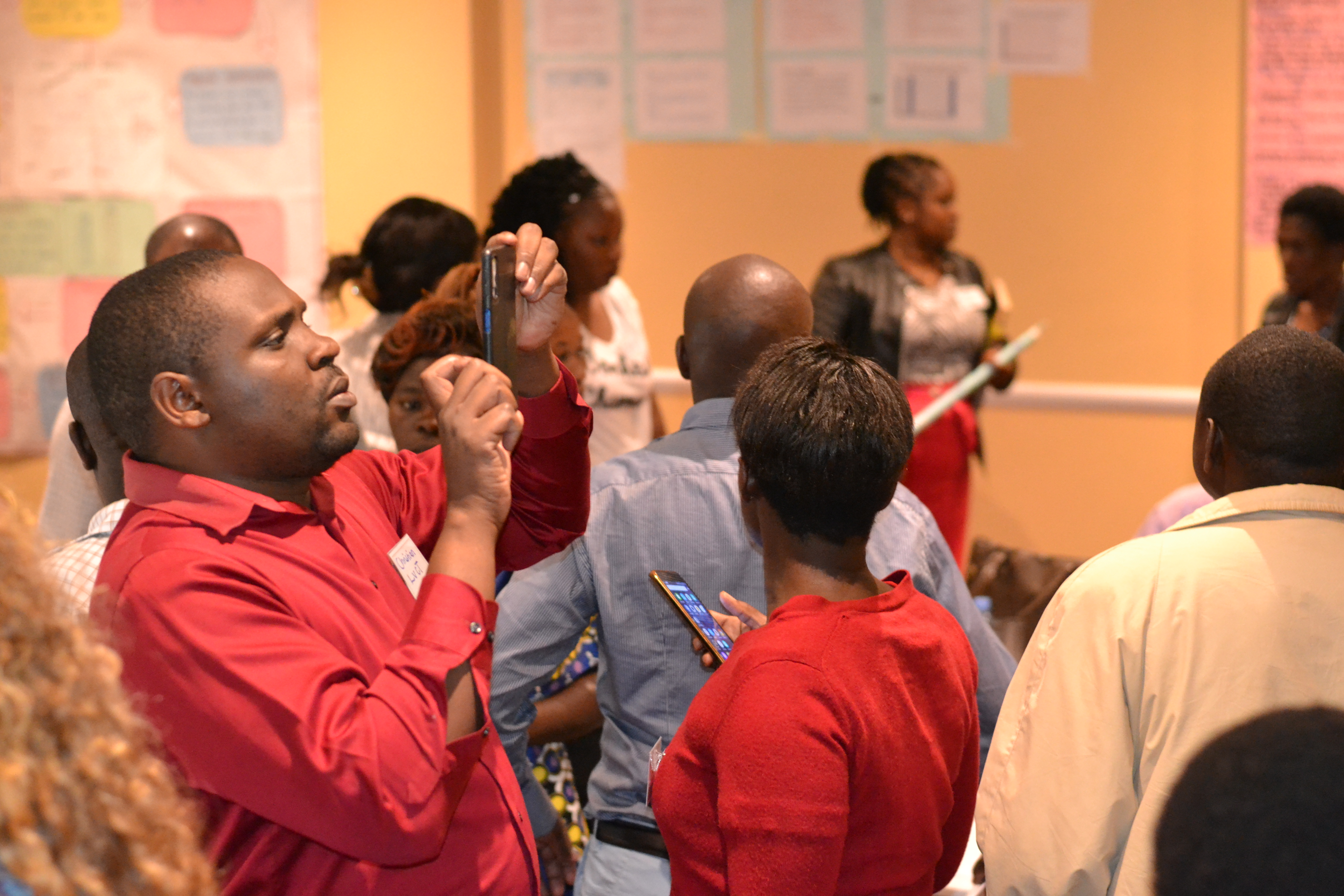Feeding into the national Community Health Strategy

QI work at the county and national level has led to the voices of community members and health workers being heard in discussions about policy and standards. This session at the 2019 Learning Event allowed participants to explore what more could be done to feed into national policy and some of the key messages that people wanted pushed forward.
Main messages that participants felt they wanted to communicate the national level included how it is important that the Ministry of Health embeds QI in the strategy and sustains the phased trainings of CHVs and scales up the QI approach to other CHUs who have not been covered so far. Stipends for CHVs should be standard across the country to ensure that they can work and meanwhile support their families. The supplies that CHVs need including kits, tools, registers should be made available. Referral systems from the community need to be strengthened and work should occur with CHEWS and other facility staff to improve the value placed on CHVs, particularly among new starters. In Nairobi CHAs and CHEWs have a heavy workload. The CHA represents many CHUs and multiple facilities. Similarly, each CHV has 100 households which makes their work untenable in terms of monthly visits. This should be addressed.
Participants felt that stories from the community need to be told in multiple fora at different levels of the health system to ensure multiple views are heard at national level. Community members can be powerful advocates and ambassadors of QI. The mechanisms for this communication include:
- Religious functions at community level e.g. churches
- Monthly community barazas organized by the local chiefs
- Policy makers at county and national level should have annual or biennial health conferences with CHVs, CHEWs and representatives of the Health Management Teams
- Regular health service assessment surveys by the County Health Departments to measure/assess coverage of services, satisfaction etc
- County and sub-county Health Management and Teams need to be involved in regular supportive supervision at community level to listen to the voices of community health service providers and beneficiaries
- Public participation forums to gather the views of community members on matters on community health QI
- Bench marking where CHU, sub-counties and counties learning from each other. This can start within the same counties where CHUS/sub-counties that have not started implementing QI interventions can learn from those that are already implementing QI
- National days that mark specific themes e.g. World Malaria Days to disseminate the value of community QI
- WITs and sub-Counties can utilize media shows to gather the voice of beneficiaries on areas that need improvement e.g. vernacular talk shows, local TV stations, local print media
- Community dialogue days that can be used as avenues for engaging communities to voice their concerns about community health
- Political rallies are opportunities to get the attention of local politicians on the importance of community health
Participants felt that sub-counties and CHEWs need to identify data that can be escalated to the MoH at national level to inform the decision makers and policy makers on how community QI interventions are having an impact on health outcomes. The national level is currently missing the changes at community level. However, currently It is difficult for the various junior levels to communicate their concerns to their supervisors e.g. CHV to CHEW, CHEW to Sub-county Focal Point and sub-county to county. In many cases the communication is given once but follow up is difficult because it is seen to be insubordination. At county level the message may not get to the chief officer or another decision maker who would ensure there is a budget for the changes that are suggested. It is not clear if and how messages reach national level and no mechanism for knowing whether you have been heard. Participants felt that national policy makers need to visit the community level to hear what is needed, including listening to feedback on tools before they are rolled out. Questionnaires could be used to gather feedback from CHVs through mobile technologies. Other potential communication channels include:
- WhatsApp groups
- County health forums
- Sub-county/county managers meetings
- CHV only forums for data sharing
In terms of what should be included in the revised strategy there is a need for standard tools that are communicated and circulated to those who should use them. For example, the MOH 515 has been revised three times without CHV input. It is difficult for teams to keep up with the changes and training/orientation of users is not done. While gaps in tools are discussed at sub-county level and shared with the county level participants felt that there is no feedback mechanism from national level and how indicators are defined is not clear. Managers meetings are the key forums for tool dissemination however there is often only a very brief orientation which is not adequate. All officers should be responsible for data training, collection and use and it would be useful to include learning events in the strategy guidelines to ensure that knowledge is communicated and spread.